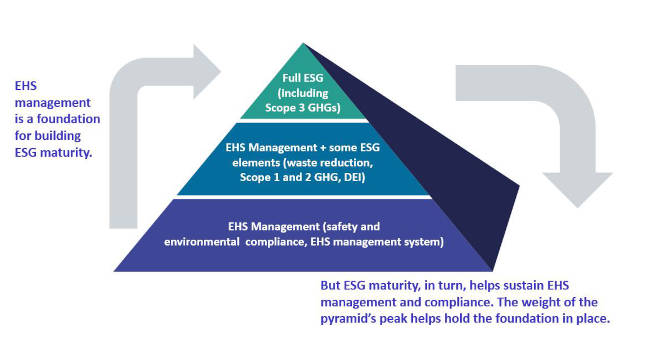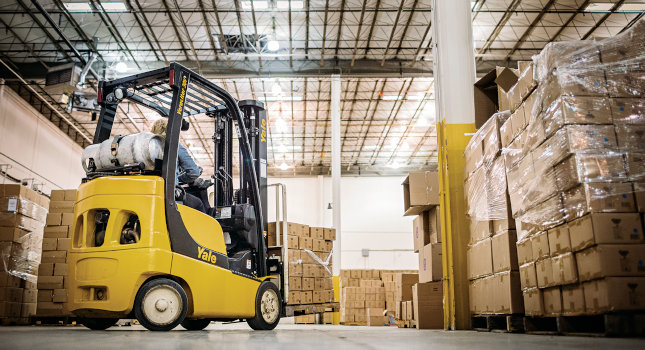Manufacturing facilities have unique challenges because of constant ambient background noise that limits effective communication. Practice and investing in the right technology can help mitigate these problems.

The past year has brought many workplace changes that will have long-lasting effects on businesses for years to come. COVID-19 has wreaked havoc on personal and professional lives and as a result created an uncertain future due to the continued transmission of the virus, changing customer demand and the resulting technological disruptions. Businesses must adapt to this new reality and find innovative ways to stay efficient and satisfy their customers.
While these changes are necessary for all businesses and in all departments, manufacturing companies face unique challenges since production is a key process that can’t be completed over a Zoom call by remote workers. Effective communication while social distancing in industrial settings is a unique challenge.
How CDC guidance impacts industrial environments
According to Centers for Disease Control and Prevention (CDC) guidance, social distancing means keeping a safe space between yourself and other people who are not from your household. To practice effective social distancing, people must keep at least 6 feet away from others in indoor and outdoor spaces to reduce the spread of COVID-19. To minimize transmission, people must practice social distancing along with wearing a mask, not touching their faces with unwashed hands, and frequently washing hands with soap and water for at least 20 seconds.
This creates a unique set of challenges in industrial settings. In many situations, workers must be positioned close together where machines are stationed. Meetings, trainings, and factory tours often require collaboration and feedback for processes to work, but workers must be mindful about distance now. The distance becomes more of a challenge in industrial settings, where background noise from machines and other equipment can create a barrier to effective communication.
Implement social distancing OSHA steps in a facility
Following CDC guidance, the Occupational Safety and Health Administration (OSHA) has released steps workplaces should follow to help employees implement social distancing protocols. By following these guidelines, workers can stay safe and as productive as possible during these unprecedented times. If workers are sick, become sick, or exhibit symptoms at home or on the job, they should stay home or seek medical care. If work can be done away from the worksite, allow for telecommuting or stagger shifts if that is not possible.
On the manufacturing floor where repetitive work is done, mark 6-foot distances with floor tape so people know where they can safely perform the job. Stagger breaks and rearrange seating in common areas to help employees keep distance from each other. Where feasible, move workstations/machines and other fixed assets to accommodate the necessary spacing, and install plexiglass partitions. These are just a few examples of how employers can promote social distancing in the workplace.
Help employees communicate more effectively
As a result of additional spacing of equipment and employees, face-to-face communication becomes much more challenging. In manufacturing facilities, there generally is background noise of varying intensity that creates even more potential interference to effective communication.
One way to help employees overcome this problem in a workplace is to provide workers with headset communication systems. This lets employees hear each other over distance and without background noise complications. These audio systems have many uses in a manufacturing setting, including inspections and monitoring, which take on increased significance with new protocols in place.
Gemba walks/floor walks with management, as well as other staff meetings such as on-site training of new team members and retraining of existing production workers, are also valuable. All of these activities are more important than ever as businesses look to follow new social distancing recommendations.
Headset communication systems
A headset communication system or tour guide system includes a headset with a built-in microphone that transmits audio to a receiver and allows it to be heard through another set of headphones. Communication systems come with different features including one-way communication, which is primarily used for tours and presentations to large groups, and two-way communication, which is primarily used for smaller tours and trainings where interactivity is important. Headsets also come with different durability and noise-reduction capabilities depending on the environment where they will be used.
The range for one-way systems goes up to at least 500 feet, while two-way systems’ range is 200 feet. These systems are ideal for making sure there is more than enough space between workers so they will feel comfortable communicating with each other and not lose audio quality in any way even with background noise present. In addition to allowing for enough spacing between employees, all headset communication systems are personal protective equipment (PPE) compatible. The headsets work as ear protection replacements since they are noise reducing, allowing for the user to hear safety alerts on the manufacturing floor. Masks, gloves and safety glasses all fit the user comfortably while providing much-needed protection for the manufacturing floor and COVID-19 concerns.
Communicate effectively while keeping employees safe
COVID-19 has presented unique challenges to manufacturing companies. Production must continue with workers present, but new processes and guidelines must be created and implemented successfully to ensure worker safety. Using a headset communication system makes it easier to follow social distancing guidelines, providing a safer environment for on-site workers.



